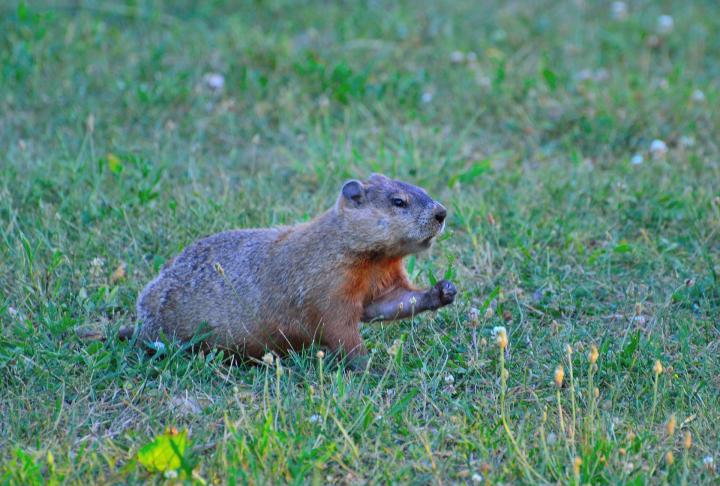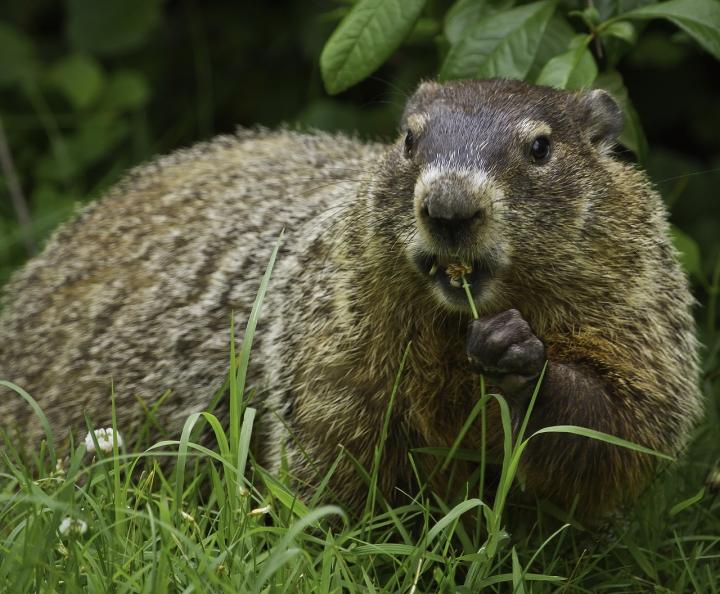
Woodchucks or groundhogs can greatly damage a garden.
Become a better gardener! Discover our new Almanac Garden Planner features for 2024. It’s easy, fun, and free to try!
How to Get Rid of Groundhogs (a.k.a. Woodchucks)
ADVERTISEMENT
Please don't relocate groundhogs, or anything else. You just make them someone else's problem, they could die, and in the spring you could orphan babies, killing them too.
So we have found that collecting our dogs feces & urine & pouring them down the holes is helpful. Also found when the canister in my vacuum is full, I will dump that down groundhog holes & dump the dog feces on top of it, it seems to help. They have destroyed the foundation around the barns at this abandoned farm we recently moved to.They also have burrowed near the foundation of the house. I ran an old hose down the hole near the house, buried the hose, covered the hole & poured the dogs urine down using a funnel. I had to do twice & now they do not try to burrow near the house. I use the feces & vacuum contents near the barns. They are still definitely around, but they are not digging the foundations up anymore & mostly stay close to the fields & the creek. So we are partially winning this!
How does one collect the dogs urine?
Firstly, a family of groundhogs or woodchucks has lived adjacent to the garden for years and I've never encountered problems. Matter of fact, they have been beneficial in that their long burrows absorb rainwater and therefore keep the ground moist during the dry summer months.
Be sure to read your state and local laws before trying to humanely relocate a groundhog. Where I live it is illegal to dump animals on another person’s property without permission, and illegal to release on public land also. Good luck finding someone who wants a groundhog on their property. They can ruin the foundation of your shed, home, retaining walls etc. People and pets are injured when stumbling upon their excavation work also. Unfortunately the only option may be to trap and humanely kill and dispose of the carcass. I won’t use poisons and risk harming other animals or scavengers. It’s distasteful but drugging after trapping (sleeping pills were recommended by a rehab person- that’s what they do) and then drowning or suffocating them is more responsible than just pushing your problem onto someone else’s property where they may be poisoned or trapped inhumanely.
I have battled these bastards for years! They are a major annoyance where I am and it is a populated village. They can be killed as they should be. Horrible cocky creatures that have no issue with dogs or cats! I wish they would just hunt these guys because they really are major nuisance animals here. They are not deterred by much. I put traps out but I have the stupidest possum that every night goes in the dang trap! My girls do not want me to do anything with him but he is keeping me from catching the ugly chuck!!
I have a mom and 6 babies groundhogs and a vegetable and flower garden. We live in harmony. They learn quickly. They are solitary animals so the babies will leave by the age of 3 months approximately. The babies have tried three times to make a nest in the garden. I have the perfect spot that they love, with big rocks and open spaces. One has to be vigilant at the beginning and check regularly to see if they are in the garden. Any loud noise will send them running away. As for the building of their new nest, I make sure that they are not in the hole and then I put a piece of cardboard with Vick's Vapor Rub on it in the hole and refill the exit that is in my garden with the earth. I also put lavender Epson salts around the type of flowers that they like and I keep an eye on any new attempts. They have learned that my garden is a "scary place" and they avoid it. I have the pleasure of seeing them play together, they are cute, sentient beings. All you need is compassion and determination at the beginning and they will oblige.
If you live in the Rockies, as I do, and are reading this for any hints to get rid of ground squirrels, as I am, be aware: Every few years someone in Colorado dies of Bubonic Plague or of another rodent born disease, Hanta Virus. The Plague is spread by fleas. If you have a dead ground squirrel, chipmunk, mouse or prairie dog on your property, don't touch it. Don't let your dog or cat touch it. The fleas jump off as soon as the body temp of their host drops just a degree or two. Sorry to be a downer, but it is really dangerous although uncommon. Hanta is from the urine and feces of infected mice. That dust often becomes airborn when it dries out. Both diseases can be deadly. We have meds for plague, but you have to recognize it withing a couple of days. Most states are constantly on the lookout for any dead rodents that they can check for infection. So it's uncommon, but really something to be aware of.
I killed six of them with Duke Conibear 220 traps. They were destroying my garden. At first, I went out into the near-by woods patch to look for their holes. I found nine holes. I tried filling them in after using "smoke bombs", road flares, etc. It was ineffective.
Then, I put up two of these inexpensive-but dangerous conibears, one-per-side at the bottom of my garden fence. I didn't even have to bait it because woodchucks are lazy and you can guide them into the trap by putting 10-12"-high boards along the bottom of your fence (even grass clippings will work). They will walk around it rather than jump over, and try to walk right through your trap, which you must securely fasten on it's side on the ground.
When they started in on my beet greens, it was war. There were six of them, and I got them all. That was two years ago.
I agree with you Paul. When all else fails use lead. And, it usually does fail.













